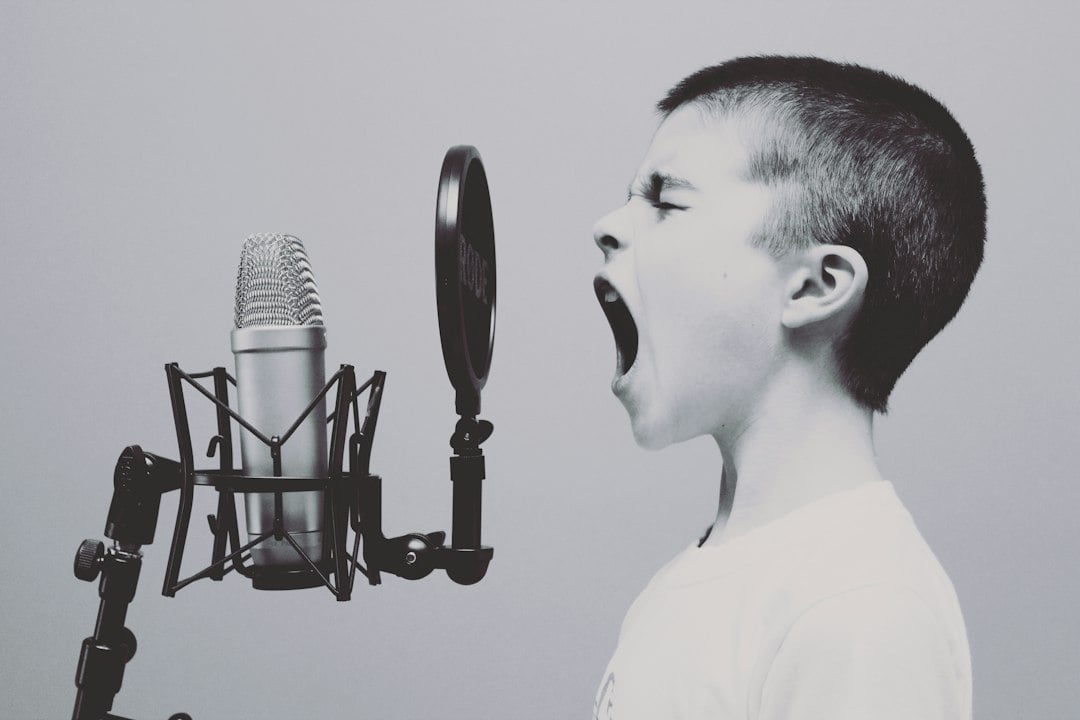
Exploring the Healing Power of Holistic Alternative Therapies
Holistic alternative therapies are approaches to healing that take into account the whole person – mind, body, and spirit. These therapies focus on treating the underlying causes of illness rather than just the symptoms, and they aim to restore balance and harmony within the individual. Holistic healing practices have been used for centuries in various cultures around the world, and they continue to gain popularity as people seek natural and holistic approaches to their health and well-being.
The history of holistic healing practices can be traced back thousands of years to ancient civilizations such as China, India, and Egypt. These cultures recognized the interconnectedness of the mind, body, and spirit and developed various healing modalities based on this understanding. For example, Traditional Chinese Medicine (TCM) is a holistic healing system that has been practiced for over 2,500 years and includes acupuncture, herbal medicine, and other therapies. Ayurveda, an ancient Indian system of medicine, also takes a holistic approach to health and emphasizes the balance of mind, body, and spirit through diet, lifestyle changes, and herbal remedies.
Key Takeaways
- Holistic alternative therapies focus on treating the whole person, including the mind, body, and spirit.
- The mind-body connection is a key component of holistic healing, as emotional and mental states can impact physical health.
- Benefits of holistic healing approaches include reduced stress, improved immune function, and increased overall well-being.
- Types of holistic alternative therapies include acupuncture, aromatherapy, and chiropractic care.
- Traditional Chinese medicine and Ayurveda are two holistic healing systems with unique principles and practices.
Understanding the Mind-Body Connection
The mind-body connection refers to the relationship between our thoughts, emotions, and physical health. It is now widely recognized that our mental and emotional state can have a profound impact on our physical well-being. For example, chronic stress can lead to a weakened immune system, increased inflammation in the body, and a higher risk of developing chronic diseases such as heart disease and diabetes.
Emotions such as anger, fear, sadness, and anxiety can also manifest as physical symptoms in the body. For instance, chronic anger may lead to high blood pressure or digestive issues, while chronic anxiety may result in muscle tension or headaches. On the other hand, positive emotions such as joy, love, and gratitude have been shown to have a beneficial effect on physical health.
Benefits of Holistic Healing Approaches
There are several advantages to using holistic healing approaches over conventional medicine. One of the main benefits is that holistic therapies focus on treating the root cause of illness rather than just the symptoms. This means that they can provide long-term relief and help prevent future health problems.
Another advantage of holistic healing is that it takes a personalized approach to each individual. Holistic practitioners take into account a person’s unique physical, mental, and emotional needs and develop a treatment plan that is tailored to them. This personalized approach can lead to more effective and sustainable results.
There are also many success stories of individuals who have experienced significant improvements in their health and well-being through holistic healing. For example, people with chronic pain have found relief through acupuncture, individuals with anxiety have found peace through meditation and mindfulness practices, and cancer patients have experienced improved quality of life through integrative medicine approaches.
Types of Holistic Alternative Therapies
| Type of Therapy | Description | Benefits |
|---|---|---|
| Acupuncture | Ancient Chinese practice of inserting needles into specific points on the body to balance energy flow | Pain relief, stress reduction, improved sleep, digestive health |
| Aromatherapy | Use of essential oils to promote physical and emotional well-being | Relaxation, stress relief, improved mood, pain relief |
| Chiropractic | Manipulation of the spine and other joints to improve alignment and function | Pain relief, improved mobility, better posture, headache relief |
| Herbal Medicine | Use of plants and plant extracts to treat and prevent illness | Improved immune function, reduced inflammation, digestive health, stress relief |
| Meditation | Practice of focusing the mind to achieve a state of calm and relaxation | Stress reduction, improved focus and concentration, better sleep, reduced anxiety |
| Reiki | Japanese technique for stress reduction and relaxation that also promotes healing | Improved energy flow, reduced stress and anxiety, pain relief, improved sleep |
| Yoga | Physical, mental, and spiritual practice that originated in ancient India | Improved flexibility, strength, balance, stress reduction, better sleep |
There are many different types of holistic alternative therapies, each with its own unique approach to healing. Some examples include acupuncture, herbal medicine, chiropractic care, massage therapy, energy healing, and mind-body practices such as meditation and yoga.
Acupuncture is a key component of Traditional Chinese Medicine and involves the insertion of thin needles into specific points on the body to stimulate energy flow and promote healing. Herbal medicine uses plants and plant extracts to treat various health conditions and restore balance within the body. Chiropractic care focuses on the alignment of the spine and nervous system to improve overall health and well-being.
Massage therapy involves the manipulation of soft tissues in the body to relieve pain, reduce stress, and promote relaxation. Energy healing techniques such as Reiki and Healing Touch work with the body’s energy field to promote healing on a physical, mental, and emotional level. Mind-body practices such as meditation and yoga help to calm the mind, reduce stress, and promote overall well-being.
Principles of Traditional Chinese Medicine
Traditional Chinese Medicine (TCM) is a holistic healing system that has been practiced for thousands of years. It is based on the principles of yin and yang, the five elements (wood, fire, earth, metal, and water), and the flow of Qi (pronounced “chee”) or vital energy in the body.
The key principles of TCM include the belief that health is a state of balance and harmony within the body, and that illness is caused by an imbalance or blockage of Qi. TCM aims to restore balance and harmony by using various therapies such as acupuncture, herbal medicine, diet, and lifestyle changes.
In TCM, each person is seen as a unique individual with their own specific needs and imbalances. The practitioner will take into account a person’s symptoms, medical history, and overall constitution to develop a personalized treatment plan.
Ayurveda: The Science of Life

Ayurveda is an ancient Indian system of medicine that takes a holistic approach to health and well-being. It is based on the belief that each person is made up of a unique combination of three doshas or energies – Vata, Pitta, and Kapha. These doshas govern various functions in the body and when they are in balance, a person experiences good health.
The key principles of Ayurveda include the belief that health is a state of balance between mind, body, and spirit, and that illness is caused by an imbalance or disruption in this balance. Ayurveda aims to restore balance through various therapies such as diet, lifestyle changes, herbal remedies, yoga, meditation, and detoxification practices.
In Ayurveda, each person is seen as a unique individual with their own specific needs and imbalances. The practitioner will take into account a person’s dosha type, symptoms, medical history, and overall constitution to develop a personalized treatment plan.
Energy Healing Techniques and Practices
Energy healing is a holistic approach to healing that works with the body’s energy field to promote balance and well-being. It is based on the belief that everything in the universe is made up of energy, including our bodies, thoughts, emotions, and the environment around us.
There are many different energy healing techniques and practices, each with its own unique approach to working with the body’s energy field. Some examples include Reiki, Healing Touch, Qi Gong, and Pranic Healing.
Reiki is a Japanese technique that involves the laying on of hands to channel healing energy into the body. It is based on the belief that when the body’s energy is balanced and flowing freely, it can heal itself. Healing Touch is a similar technique that uses gentle touch to clear and balance the body’s energy field.
Qi Gong is a Chinese practice that combines movement, breathwork, and meditation to cultivate and balance Qi in the body. It is based on the belief that when Qi is flowing freely, health and well-being are maintained. Pranic Healing is a system of energy healing developed by Master Choa Kok Sui that uses prana or life force energy to heal the body.
Mindfulness and Meditation for Healing
Mindfulness and meditation are practices that involve bringing one’s attention to the present moment and cultivating a state of non-judgmental awareness. These practices have been used for centuries in various cultures around the world as a means of promoting relaxation, reducing stress, and improving overall well-being.
Mindfulness involves paying attention to one’s thoughts, feelings, bodily sensations, and the surrounding environment without judgment. It can be practiced in various ways such as through formal meditation practices or through everyday activities such as eating or walking.
Meditation involves focusing one’s attention on a specific object or activity such as the breath, a mantra, or a visualization. It is a practice of training the mind to be present and to cultivate a state of calm and clarity.
Both mindfulness and meditation have been shown to have numerous benefits for physical and mental health. They can reduce stress, improve sleep, enhance immune function, lower blood pressure, and promote overall well-being.
Integrating Holistic Therapies with Conventional Medicine
Holistic therapies can complement conventional medicine by providing additional support and addressing the underlying causes of illness. For example, acupuncture can be used alongside medication to manage pain, herbal remedies can be used to support the immune system during cancer treatment, and mindfulness practices can be used to reduce stress and anxiety in conjunction with therapy or medication.
There are many successful examples of integrative medicine practices where holistic therapies are used alongside conventional treatments. For instance, cancer centers often offer integrative medicine programs that include acupuncture, massage therapy, and mind-body practices to support patients during their treatment journey. Integrative medicine approaches have also been successful in managing chronic pain, reducing symptoms of anxiety and depression, improving cardiovascular health, and enhancing overall well-being.
Choosing the Right Holistic Practitioner for You
When choosing a holistic practitioner, it is important to find someone who is qualified, experienced, and trustworthy. Here are some tips for finding the right holistic practitioner for you:
1. Do your research: Look for practitioners who are licensed or certified in their respective fields and who have a good reputation. Read reviews and ask for recommendations from trusted sources.
2. Ask about their training and experience: Find out about their educational background, years of experience, and any specialized training they have received. It is also important to ask about their approach to healing and how they integrate different modalities.
3. Trust your intuition: Pay attention to how you feel when you meet with a practitioner. Trust your gut instincts and choose someone who makes you feel comfortable and supported.
4. Ask questions: Before choosing a practitioner, ask them about their treatment approach, what to expect during sessions, and any potential risks or side effects. It is also important to ask about their fees, insurance coverage, and cancellation policies.
Holistic alternative therapies offer a unique and comprehensive approach to healing that takes into account the whole person – mind, body, and spirit. These therapies have been used for centuries in various cultures around the world and continue to gain popularity as people seek natural and holistic approaches to their health and well-being.
The mind-body connection is a fundamental aspect of holistic healing, as our mental and emotional state can have a profound impact on our physical health. Holistic healing approaches offer several advantages over conventional medicine, including a focus on treating the root cause of illness, personalized treatment plans, and numerous success stories of improved health and well-being.
There are many different types of holistic alternative therapies, each with its own unique approach to healing. Traditional Chinese Medicine (TCM) and Ayurveda are two ancient healing systems that take a holistic approach to health and well-being. Energy healing techniques such as Reiki and Healing Touch work with the body’s energy field to promote balance and well-being. Mindfulness and meditation practices can also be powerful tools for healing.
Holistic therapies can complement conventional medicine by providing additional support and addressing the underlying causes of illness. There are many successful examples of integrative medicine practices where holistic therapies are used alongside conventional treatments.
When choosing a holistic practitioner, it is important to do your research, ask about their training and experience, trust your intuition, and ask questions before making a decision. By exploring holistic healing options and finding the right practitioner for you, you can take an active role in your own health and well-being.
FAQs
What are holistic alternative therapies?
Holistic alternative therapies are non-conventional approaches to healthcare that focus on treating the whole person, including their physical, emotional, and spiritual well-being. These therapies often involve natural remedies and techniques that aim to promote healing and balance in the body.
What are some examples of holistic alternative therapies?
Some examples of holistic alternative therapies include acupuncture, aromatherapy, chiropractic care, herbal medicine, massage therapy, meditation, naturopathy, and yoga. These therapies are often used in combination with one another to provide a comprehensive approach to healing.
Are holistic alternative therapies safe?
Holistic alternative therapies are generally considered safe when practiced by trained professionals. However, it is important to note that these therapies may not be appropriate for everyone, and some may have potential side effects or interactions with other medications. It is important to consult with a healthcare provider before beginning any new therapy.
Do holistic alternative therapies work?
The effectiveness of holistic alternative therapies varies depending on the individual and the specific therapy being used. While some people may experience significant benefits from these therapies, others may not see any improvement. It is important to approach these therapies with an open mind and to work with a qualified practitioner to determine the best approach for your individual needs.
Are holistic alternative therapies covered by insurance?
Holistic alternative therapies are not typically covered by traditional health insurance plans. However, some insurance plans may offer coverage for certain therapies, such as acupuncture or chiropractic care, as part of a broader wellness program. It is important to check with your insurance provider to determine what types of therapies may be covered.

















